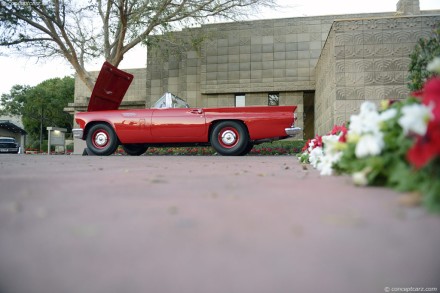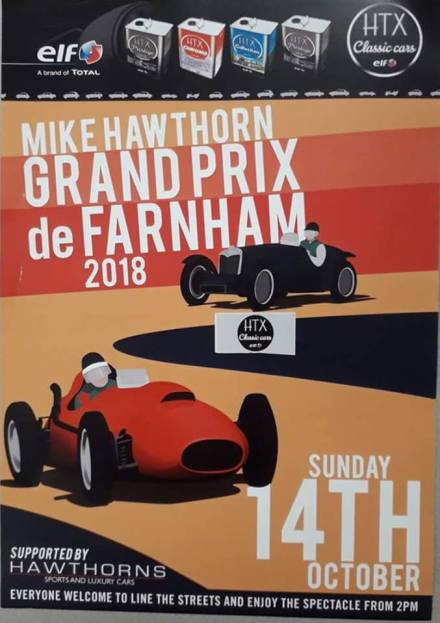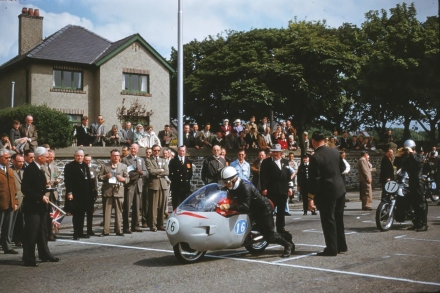Very few mass-produced motor cars have packed the same ‘wow factor’ as the original Ford Thunderbird. Its styling screamed of the jet age and mankind’s love of modernity. It was the ultimate chromium plated symbol of post-war consumerism.
What it was not, however, was much of a performer. While its looks could not be faulted, the T-bird arrived just as Chevrolet showed that it had picked up a thing or two about European sports car dynamics and conjured the Corvette as a result. European sports cars were being imported to the States about as fast as the likes of Ferrari, Jaguar and Porsche could pump them out of their workshops and all of these confections left Ford’s ‘personal luxury car’ looking a bit green around the gills.
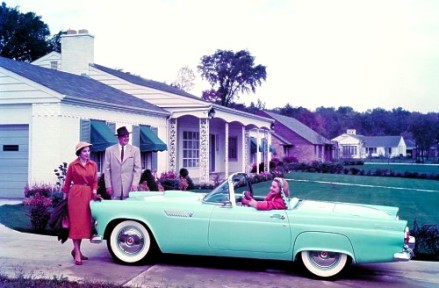
The original 1955 Thunderbird was all show, less go
Things got worse in 1956. In order to free up space in the boot – or ‘trunk’ as our trans-Atlantic cousins would have it – the spare wheel was moved up and out to stand vertically in a chintzy little case above the rear bumper.
Just as Georges Boillot discovered in the 1914 Peugeot, this did nothing to assist the car’s dynamic properties. The Thunderbird went from being a fast-looking two-seater with a performance deficit to being a slow two-seater with an unwieldy rear end. While it still looked like a million dollars, it handled like loose change and sold in pitiful numbers.
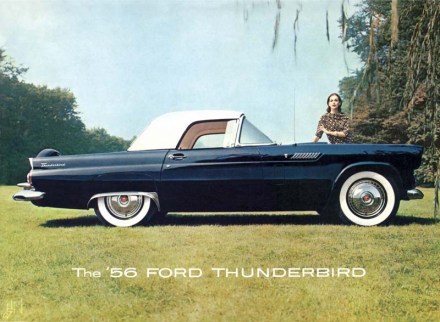
Mounting the spare wheel vertically on the rear bumper did nothing for dynamics in 1956
That’s why, after two years, the alpha male among Ford’s so-called ‘whiz kid’ management team, Robert Macnamara, gave orders to kill the two-seat model off and replace it with a four-seater for 1958. This meant that, for 1957 only, Ford’s engineers had the opportunity to show exactly what might have been and to send the classic Thunderbird off with some genuine sporting credentials.
In 1957, Ford produced a total of 21,380 Thunderbirds. Of these, just 205 were delivered with what was known as the F-Code engine package. Soon to be whispered of in bars and at racetracks as the ‘F-bird’, Ford’s skunkworks delivered what was to be the ultimate Q-car of the 1950s.
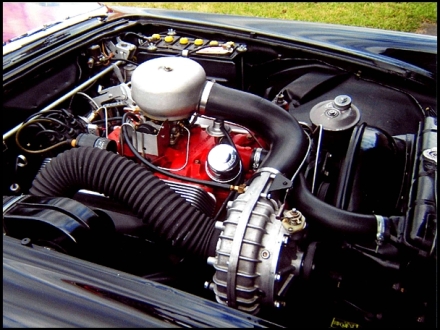
The recipe for F-Code took Ford’s highest performance V8 and added a thumping great supercharger
The F-Code engine was the largest of Ford’s small block V8s, the 312-cubic inch model, to which was added a McCulloch/Paxton supercharger, a hot cam, a Holley four-barrel carburetor, and unique cylinder heads, to keep the compression ratio at a reasonably sane 8.5:1. Either a three-speed manual or Ford-O-Matic transmission was available, running through a 3.56 rear axle – of which only 25 were factory fitted.
None of this muscle was ever intended to go into a showroom model: it was Ford’s super-package for NASCAR and other motor sport applications. The F-code offered a conservative 300 bhp and a still more conservative 300 lb/ft of torque which could propel the Thunderbird to 60 mph in fewer than six seconds. It ensured that the Thunderbird turned into a velociraptor that could make mincemeat of the Corvette.
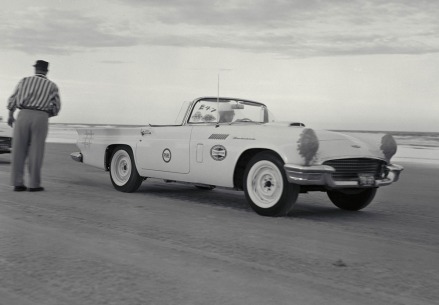
The same spec as Ford’s entries in Daytona Beach Speed Week was implanted for showroom consumption
All of this was a $340 factory option package on top of the ’57 Thunderbird’s $2,944 base price – cheap performance but putting the relatively hum-drum Ford into an exotic price bracket. That is why the volume of sales for the F-bird was so low – apparently endorsing Macnamara’s decision to kill off the two-seat car and replace it with something more family minded.
Sure enough the 1958 Ford Thunderbird, with more seats, less power and less sass, broke all records in terms of sales. Ford’s beauty became less of a show pony and more of a success and that’s fine. But if you want to buy a Ford can stir your soul, some six decades after it appeared, you need to find one of those 205 F-birds. And around $200,000 to bring it home.
